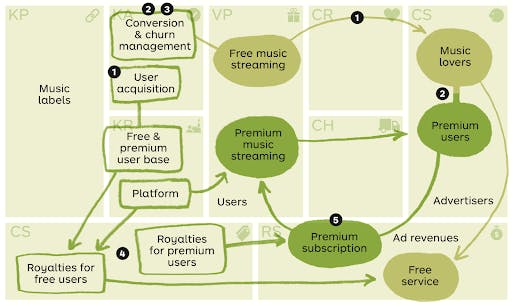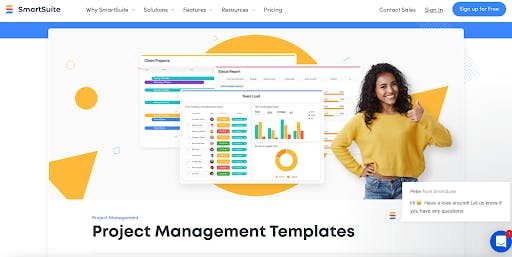Freemium platforms are incredibly popular in today’s online world. Users love them because they’re able to enjoy a variety of limited services from world-class companies at no cost.
But there’s a reason why big companies like Dropbox and Spotify offer these free services. They can be incredibly lucrative if you know what you’re doing.
And sure, right off the bat, you would assume that the best way to extract value from your freemium customers is to get them to upgrade to a paid service. That’s definitely true, but it’s far from the only way you can experience the benefits of freemium platforms.
In this article, we’re going to explain four ways that you can pull value from your freemium customers without ever charging them a dime.
What is a freemium platform?
Before we dive in, let’s discuss what we mean by freemium platforms.
A freemium platform is one with a base or basic service offered to a customer at no cost. These services then typically offer some kind of premium product or membership that grants the customer more access or a less intrusive ad experience for a monetary price.
A perfect example of this is the music platform Spotify.
Spotify has a free version that anyone can use, but it comes with a lot of restrictions.
For starters, free Spotify has ads every so often, just like a regular terrestrial radio station. It also only allows free users to skip six songs per hour. The premium version of Spotify allows for unlimited access, including as many skips as you want. You’re also not subject to any advertisements.
Spotify launched as a free service in 2006 and started adding premium services as it went. In 2019, the company generated a profit for the first time.

Then there are companies like Dropbox. It offers online storage to customers at no cost — but the kicker is that it doesn’t offer a whole lot of storage. By upgrading to a paid subscription, you get access to more space.
Chase established itself as a great bank for college students by using a freemium model. The bank offers a basic savings account and, while it normally charges a fee for small balances, the account is free to anyone with a linked college checking account for overdraft protection.
You’re probably assuming that the bulk of these companies’ profits come from premium upselling, and that’s not wrong. But there are many ways to create value from freemium customers without going after their money.
Let’s go through them now.
Top 4 ways to extract value from freemium customers without charging them
Freemium customers are always waiting for you to turn around and ask them for money. This stems from our shared belief that nothing is ever truly free. But you can change that. Here are four ways to avoid charging your freemium customers while still creating value from their continued no-cost patronage.
1. Sell advertising
This is the obvious one, so let’s get it out of the way.
Ads are huge in the freemium industry and can be an effective generator of revenue for your business.
Look at freemium mobile games, for example. This industry is immense, and it’s worth upwards of $39.8 billion just from ad revenue.
How much does this boil down to per ad?
For impressions on rewarded video ads (users watch a video for an in-game reward), you see an average payout of $0.02 per impression.
Interstitial ads, where full-screen ads come in during a natural break in the flow of a platform, see a return of about $0.16 per completion.

Offerwall ads, where you create a mini-store where users complete actions to earn features or rewards, can see a massive return of $2.50 per ad.
The kicker here is that ads annoy people, and if you lean into them too much, you’re going to drive customers away. But if you can find a happy balance, you can make a killing through freemium ad revenue.
2. Discover what customers want
Value doesn’t always equate to money. Some actions that you can take generate value for your business through ethically-sourced data that can be leveraged into future profitable actions.
Freemium platforms represent a huge opportunity to gather analytics from your customers. By examining the way they use your freemium services, you’ll be able to get a good sense of what your customers like and don’t like.
Additionally, you can collect customer feedback from your trial users and find out where you can improve, directly from them. You can then leverage this information when it comes time to update your platform and market it to the masses.
Let’s take a departure from the world of entertainment and journey into the realm of business-to-business (B2B) services.

By publishing resources like this and allowing people to download them, you’ll be able to tell which templates your customers care about most. That can then be applied to your ongoing marketing strategy. By focusing your efforts on proven products and services, you’ll ensure that you can continue generating an audience that will keep coming back.
3. Segment your audience
You can use freemium platforms to get to know your audience even better by creating audience segments, which can then inform your future marketing efforts.
When someone signs up for your platform using a free membership, you’re able to gather a wealth of data on them. This might include their age, gender, geographic area, email address, phone number, interests, etc.
You can then analyze this data to create segments of your audience. These specific customer profiles speak to different demographics that make up your target audience.
Segment A might want something from you that’s completely different from Segment B. And Segment C is its own animal altogether.
By understanding these segments, you can release personalized marketing messages for each. This works much better than a one-size-fits-all blanket approach.
Segment A doesn’t care about what you’re trying to sell Segment C. So keep each segment separate, determine which can be the most profitable, and split your efforts accordingly.
4. Leverage user-generated content
Never underestimate the value of user-generated content.
This is content that is generated by your users. It might be a review, social media post, case study, testimonial, or anything else created by your customers.
While most people agree that user-generated content is a good thing, it’s sometimes difficult to come by.
One way around this is to mine your freemium users for content by offering prizes and giveaways.
For example, you can run a contest where anyone who posts a review of your product on social media using a specific hashtag will be entered into a drawing to win a prize.

Encourage your freemium users to generate content for you that you can then use in your marketing for years to come.
Getting the most out of a freemium model
Just because a customer isn’t actively paying you doesn’t mean they have no value.
Freemium customers could be a gold mine for your business if you know how to leverage them properly. By following these four steps, you can generate value from freemium customers without ever charging them any money.
About the author
This is a guest post by Axelle Dervaux. Axelle has experience in digital marketing with a focus on B2B marketing for SaaS companies. She’s working in various marketing fields such as SEO and SEA, social media, lead nurturing, customer retention, product marketing. She is the Marketing Manager at clicdata.com, a cloud-based business intelligence, and data management platform. Connect with her on LinkedIn.





